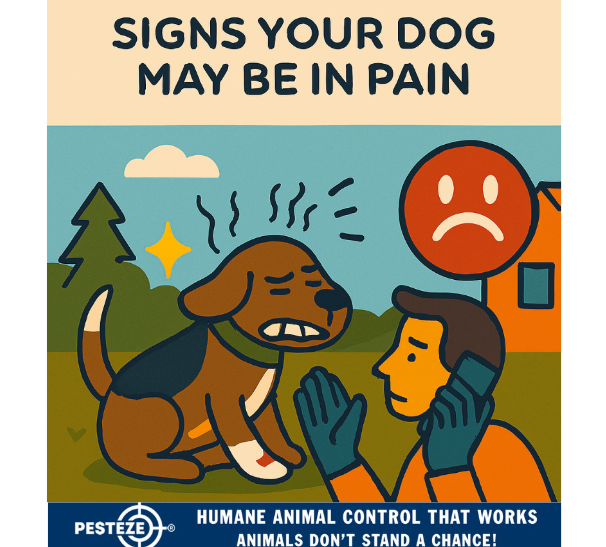SIGNS YOUR DOG MAY BE IN PAIN

SIGNS YOUR DOG MAY BE IN PAIN
SUMMARY
Dogs are experts at hiding pain, making it difficult for pet owners to recognize when something is wrong. Whether it’s due to injury, illness, or aging, subtle behavioral and physical changes can signal discomfort. This guide outlines key signs your dog may be in pain and offers actionable steps to help you respond quickly and compassionately. Early detection is crucial for effective treatment and improving your dog’s quality of life.
FEATURES
-
Changes in Behavior: Increased aggression, withdrawal, or clinginess may indicate your dog is hurting.
-
Vocalizations and Whimpering: Unusual barking, whining, or yelping can be signs of physical distress.
-
Limping or Mobility Issues: Difficulty walking, climbing stairs, or standing up often points to joint or muscle pain.
-
Excessive Grooming or Licking: Constant licking of one area may suggest injury or inflammation.
-
Altered Eating and Sleeping Habits: Loss of appetite or restlessness can be linked to discomfort or internal pain.
-
Facial Expressions and Posture: Squinting, tense muscles, or a hunched back are subtle but telling indicators.
GUIDE DESCRIPTION
Recognizing pain in dogs isn’t always straightforward. Unlike humans, dogs instinctively mask their discomfort to avoid appearing vulnerable. As a pet owner, it’s your responsibility to notice the subtle signs and take action to ensure your dog’s well-being.
Behavioral changes are often the first clue. A normally playful dog may become withdrawn, irritable, or unusually clingy. Aggression toward people or other pets can also be a reaction to pain, especially if touched in a sensitive area.
Vocal cues like whining, yelping, or growling during routine activities—such as being picked up or going for walks—can signal discomfort. These sounds are your dog’s way of communicating distress.
Mobility issues are common in dogs experiencing joint or muscle pain. Limping, stiffness, or reluctance to climb stairs may indicate arthritis, injury, or neurological problems. Always monitor changes in movement and posture.
Excessive licking or grooming of a specific spot can be a sign of localized pain, such as a wound, infection, or inflammation. If the behavior persists, consult your veterinarian.
Changes in eating and sleeping habits may also point to pain. A dog that suddenly loses interest in food or struggles to rest comfortably could be experiencing internal discomfort.
Finally, watch for subtle physical signs like squinting, flattened ears, or a hunched back. These expressions often reflect pain, even when your dog isn’t vocalizing.
If you suspect your dog is in pain, contact your veterinarian promptly. Early intervention can prevent complications and help your dog recover more comfortably.
- Amy Chang


Comments 0